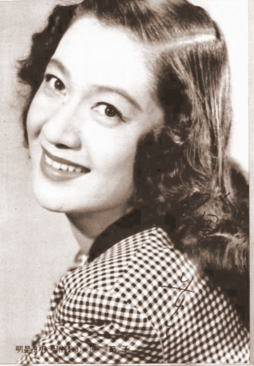
With
Tom Benson
Rachel Bevan
Brendan Stuart Burns
Lucy Clout
Chris Grygiel
Mike Marshall
Gabriele Porta
Hiromi Kawasaki
Pernille Leggat Ramfelt
Anthony Shapland
Rebecca Spooner
Aishan Yu
Put together by Richard Bevan
★★ INCLUDING a new book 'Setsuko Hara' by Richard Bevan & Tamsin Clark published by The Block ★★
★
Exhibition dates: 22 January - 15 March
★ Private View date and time: 22 January 5- 7pm
★Open: 9:00 - 16:30 Monday to Friday

★Birth name: Masae Aida
★Date of birth (location):17 June,1920. Yokohama, Kanagawa-ken, Japan
★Debut film: 1935 “Do not Hesitate, Young Folks” Directed by Tetsu Taguchi (Japanese Title:”Tamerau Nakare Wakodo yo”)
★Last film:1962 "Chushingura" Directed by Hiroshi Inagaki
★She worked 28years and appeared more than 100 films.
One of the biggest, the most memorable, and the most beautiful actress in Japan. She is called “Eternal Virgin” and her presence is now god like legend. Maybe because she suddenly and mysteriously quit her job without a notice in 1962; when she was still beautiful and in the stardom. And never showed up in the public eyes since then, and having a seclusion life in a temple located at Kamakura, which is an ancient city, for almost 40 years.
She even disconnect with her old friends. And yes, she never married.
Maybe she is the last holy legend that Japan has. Her beautiful and traditional
Japanese woman’s image as she showed in Ozu’s “Tokyo Story” will remain forever in our minds.
Her first big break was “The Samurai’s daughter” [or “Atarashiki Tsuchi” (The new soil)] which was the first Japanese-German collaboration film in 1937. [Directed by Arnold Frank, famous for German Mountains film, and Mansaku Itami] Arnold Frank actually nominated her after he saw her at the filming site of “Kochiyama Sosyun” directed by Sadao Yamanaka. At that time, she was thought to be a girl who has a European taste beauty, which is interesting because later she will represent the opposite---traditional Japanese woman.
Since then, she started her starhood until her retirement. But her
peak started after the World War 2; when she starts to represent the new
democratic atmosphere. She became the icon of the new era’s free woman.
It was also ironic because she used to be the goddess of the militarism
in the war time.
So her public image continuously changed, always fitting and reflecting
the social state of the time. And Ozu’s series of works with her, starting from “Late Spring” (1949), made her into legend. Her beauty, purity gave life to the traditional Japanese woman’s image “Yamato Nadeshiko” and remembered forever.
View Email in Browser
Go Back to the Top page
|
